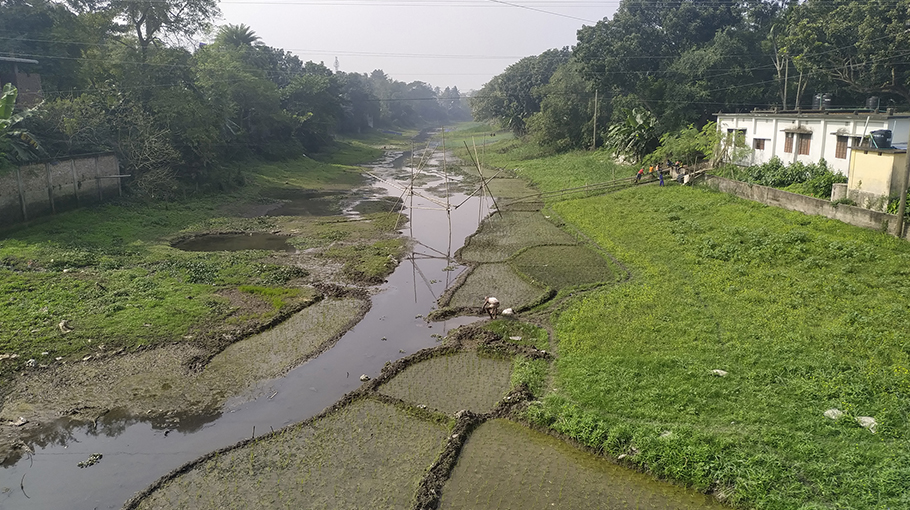Chalan Beel under threat
Rivers, canals crisscrossing Chalan Beel drying up

The rivers, canals and rivulets criss -crossing the Chalan beel, the largest sweet-water body natural reservoir covering Pabna, Natore and Sirajganj district are being dried up. The larger Chalan beel region is comprised of Chatmohar, Bhangura, Faridpur of Pabna district, Gurudaspur, Singra and Boraigram of Natore district and Tarash, Raiganj and Ullapara of Sirajganj district. Most of the rivers and canals of the Chalan beel have not been excavated for a long time. As a result, rivers, canals, rivulets and watebodies( beels) of the areas are getting dried up before the winter season every year resulting a crisis in irrigation and the extinction of local varieties of fish species. It is also affecting the local trade and commerce due to the suspension of the riverine transport.
Hasinur Rahman Ujjal of Chaikola village under Chatmohar upazila informed, in the near past, the boat was the only means of transport in Chalanbeel region.Now the water transport remained suspended, many local traders failed to transport their goods through boats from one place to another.
The local customers also fail to travel placed through boats. Thousands of local fishermen have virtually turned 'unemployed' due to drying up of the rivers and the canals. Many of them have already forced to change their profession.
Earlier, local farmers used to irrigate their crop fields using shallow tubewells but they are now failing to fetch water through those shallow tubewells.
Many of them are trying to fetch water by setting their tubewells some 10 to 15 feet below the ground. Though some of the rivers including the Atrai were reexcavated but due to massive irregularities and corruption, those reexcavated rivers are carrying much water and the local people remained deprived from getting the benefit of the reexcavation.
Dr SM mukt Mahmud, Head of the Department of Geography of Chatmohar Government College informed, Geographically the rivers flowing through the region are at the end phase of their life-cycle. The depth of the rivers at the Chalan beel areas is less, the amount of flowing water in the rivers is also less as the force of current of those river water is very slow.
As the distances of those rivers are far from their sources, the water of those carries a huge quantity of soil sediment, sand particles, small pebbles, pebble particles and garbages. Those particiles and garbages are being deposited at the bottom of the rivers decreasing the capacity of containing water of the rivers. As a result, before the advent of the dry season, those rivers are drying up. Such an early drying up of the rivers and badly hampering the food chain of the plants and the animals.This is also badly hampering the daily activities of the human beings, crop production, fish production and all the activities related to water. This is also causing a huge degradation of the environment.
SM Mijanur Rahman, Member Secretary of Boral River Raskha Committee informed, rivers, beels and canals are the 'life' of the Chalanbeel. If the rivers, canals and beels of this region cannot be saved, the Chalanbeel will loss its identity. He further said the Boral River Raskha Committee has been continuing the movement for a long time aiming to save the Chalanbeel by properly excavating its rivers, canals and the rivulets as early as possible.




